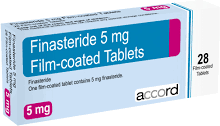A 65-year-old patient with type 2 diabetes has a urinary tract infection (UTI). The unlicensed assistive personnel (UAP) reported to the nurse that the patient's blood glucose is 642 mg/dL and the patient is hard to arouse. When the nurse assesses the urine, there are no ketones present.
What collaborative care should the nurse expect for this patient?
Administer IV fluids rapidly to correct dehydration.
Routine insulin therapy and exercise
Cardiac monitoring to detect potassium changes
Administer a different antibiotic for the UTI.
The Correct Answer is A
Choice A rationale: This patient is likely experiencing hyperosmolar hyperglycemic state (HHS). Rapid administration of IV fluids is crucial to correct severe dehydration associated with HHS.
Choice B rationale: Routine insulin therapy and exercise might be components of diabetes management but wouldn't directly address the immediate concern of severe dehydration and high blood glucose.
Choice C rationale: Cardiac monitoring for potassium changes might be necessary but isn't the primary immediate intervention for HHS.
Choice D rationale: Administering a different antibiotic for the UTI is incorrect, because there is no evidence that the current antibiotic is ineffective or causing adverse effects. The UTI may have triggered the HHS, but it is not the main problem that needs to be addressed urgently.
Nursing Test Bank
Naxlex Comprehensive Predictor Exams
Related Questions
Correct Answer is D
Explanation
Choice A rationale: Fluoxymesterone is a synthetic forms of testosterone that can worsen BPH by increasing the level of DHT.
Choice B rationale: Danazol is a synthetic forms of testosterone that can worsen BPH by increasing the level of DHT.
Choice C rationale: Methyltestosterone is a synthetic forms of testosterone that can worsen BPH by increasing the level of DHT.
Choice D rationale: Finasteride is a medication that inhibits the conversion of testosterone to dihydrotestosterone (DHT), which is a hormone that stimulates the growth of the prostate gland. By reducing the level of DHT, finasteride can shrink the enlarged prostate and improve urinary symptoms in men with benign prostatic hyperplasia (BPH). The other choices are not appropriate for BPH.
 |
Correct Answer is B
Explanation
Choice A rationale: The 42-yr-old patient with secondary amenorrhea may have menopause, pregnancy, or a hormonal disorder. This is less urgent compared to the 19- year old patient.
Choice B rationale: This patient may have toxic shock syndrome, which is a life- threatening complication of tampon use that can cause organ failure and shock. The nurse should assess the patient's vital signs, remove the tampon, and initiate fluid resuscitation and antibiotic therapy.
Choice C rationale: This patient may have an infection or a complication of the balloon thermotherapy, which is a procedure to destroy the endometrial lining of the uterus and is not an emergency compared to the 19 year old.
Choice D rationale: This patient may have a displacement or perforation of the IUD, which is a contraceptive device that releases progestin into the uterus. However, this is not urgent compared to the 19 year old.
Whether you are a student looking to ace your exams or a practicing nurse seeking to enhance your expertise , our nursing education contents will empower you with the confidence and competence to make a difference in the lives of patients and become a respected leader in the healthcare field.
Visit Naxlex, invest in your future and unlock endless possibilities with our unparalleled nursing education contents today
Report Wrong Answer on the Current Question
Do you disagree with the answer? If yes, what is your expected answer? Explain.
Kindly be descriptive with the issue you are facing.
